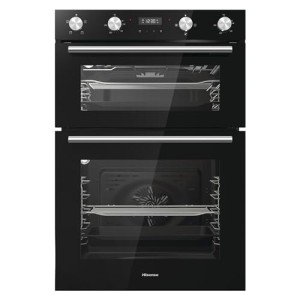The Most Profound Problems In Kitchen Built In Oven
The Ultimate Guide to Kitchen Built-In Ovens: What You Need to Know
When it concerns modern kitchens, the built-in oven is more than just a home appliance; it is a statement of design, effectiveness, and performance. Built-in ovens are created to integrate perfectly into cabinets, offering a sleek look that boosts the total design of the kitchen. This article explores the various types, advantages, and considerations of kitchen built-in ovens, and provides insights to help you make an informed getting choice.
Table of Contents
- What is a Built-In Oven?
- Types of Built-In Ovens
- 2.1 Single Ovens
- 2.2 Double Ovens
- 2.3 Steam Ovens
- 2.4 Wall Ovens
- Advantages of Built-In Ovens
- Secret Features to Look For
- Setup Considerations
- Often Asked Questions
- Conclusion
1. What is a Built-In Oven?
A built-in oven is an oven designed to be set up within kitchen cabinetry instead of as a freestanding unit. This design enables higher visual versatility while making the most of readily available kitchen area. Built-in ovens can be found in numerous sizes and configurations, accommodating diverse culinary requirements and kitchen designs.
2. Kinds Of Built-In Ovens
Understanding the various kinds of built-in ovens can assist customers choose the ideal one for their kitchen setups and cooking designs.
2.1 Single Ovens
Single ovens are compact and created to fit within basic cabinet widths. These ovens typically offer enough space for daily cooking requirements, such as baking or roasting. They are available in different electric or gas models and are frequently easy to use with straightforward controls.
2.2 Double Ovens
For individuals who regularly host large gatherings or delight in cooking multi-course meals, double ovens can be a lifesaver. These units include 2 separate oven compartments and deal increased cooking capacity, enabling synchronised baking or roasting at different temperatures.
2.3 Steam Ovens
Steam ovens make use of steam to cook food, which assists retain moisture and nutrients. These ovens are progressively popular among health-conscious individuals and gourmet cooks. Steam ovens can be built-in alongside traditional ovens for a flexible kitchen setup.
2.4 Wall Ovens
Wall ovens are designed to be set up within a wall instead of under counter tops. They use practical access and can be integrated with other wall-mounted kitchen appliances. Wall ovens may be readily available as single or double systems.
3. Advantages of Built-In Ovens
Choosing a built-in oven comes with many advantages:
- Space Efficiency: Built-in ovens can be tucked into kitchen cabinetry, maximizing important kitchen space.
- Visual Appeal: They supply a cleaner, more modern-day appearance than standard freestanding ovens.
- Range of Designs: Built-in ovens are available in numerous finishes, including stainless-steel, black, and white, permitting combination with various kitchen designs.
- Improved Functionality: Many built-in ovens come equipped with innovative functions such as self-cleaning modes, touch screens, and convection innovation.
4. Secret Features to Look For
When picking a built-in oven, consider the following features to enhance cooking functionality:
- Temperature Range: A broader temperature range enables greater adaptability in cooking different dishes.
- Self-Cleaning Options: Look for models that offer self-cleaning abilities to save effort and time on maintenance.
- Convection Cooking: Convection ovens circulate air to cook food uniformly and rapidly.
- Wi-Fi Connectivity: Some modern built-in ovens featured Wi-Fi capability, permitting users to control settings or pre-heat the oven from another location.
- Security Features: Check for functions like automated shut-off, child locks, and cooling systems to guarantee maximum safety.
5. Setup Considerations
Before purchasing a built-in oven, certain setup elements require to be addressed:
- Size and Dimensions: Ensure the picked oven fits the designated area. Measure the height, width, and depth of the desired setup location.
- Ventilation: Gas ovens require sufficient ventilation to ensure security. Seek advice from an expert if essential.
- Electrical Requirements: Check the electrical specifications of the chosen unit to make sure compatibility with existing outlets.
- Expert Installation: If you're not experienced in appliance installation, it may be a good idea to look for professional support to guarantee correct fitting and compliance with local codes.
6. Frequently Asked Questions
Q1: How do built-in ovens vary from freestanding ovens?A: Built-in ovens are set up in cabinets for a smooth appearance, while freestanding ovens stand alone and do not need built-in installation.
Q2: Can you install a built-in oven yourself?A: While some people with experience may pick to install an oven themselves, it is usually recommended to employ a professional to make sure electric or gas connections are securely installed. Q3: Are built-in ovens energy-efficient? A: Many built-in ovens include energy-saving technology and are often more effective compared to older designs. Constantly examine energy rankings before buying. Q4: Do built-in ovens require special maintenance?A: Regular maintenance includes keeping
the interior clean and examining for any wear and tear. Self-cleaning
models can streamline this job considerably. Q5: What is the average life expectancy of a built-in oven?A: The average lifespan of a built-in oven is generally in between 10 to 15 years, depending upon usage and upkeep practices. 7. Conclusion Purchasing a built-in oven can boost both the performance and aesthetic appeals of your kitchen. With different types and functions available, customers
can select designs that
best fit their cooking design and style choices. Whether an experienced chef or a home cook, the advantages of going with a built-in oven are clear. By thinking about gas hob electric oven built-in described in this guide, people can make educated choices that will result in years of cooking pleasure. Additional Resources For further information on kitchen appliances, consider having a look at the following resources: Consumer Reports: Product reviews and purchasing guides. Energy Star: Energy-efficient device recommendations. Home Improvement Stores: Local specialists can supply extra insights and recommendations. Starting a kitchen restoration or upgrade can be
- *an amazing journey, and selecting the best built-in oven plays an essential role in creating afunctional and elegant cooking environment.
 **
**
****